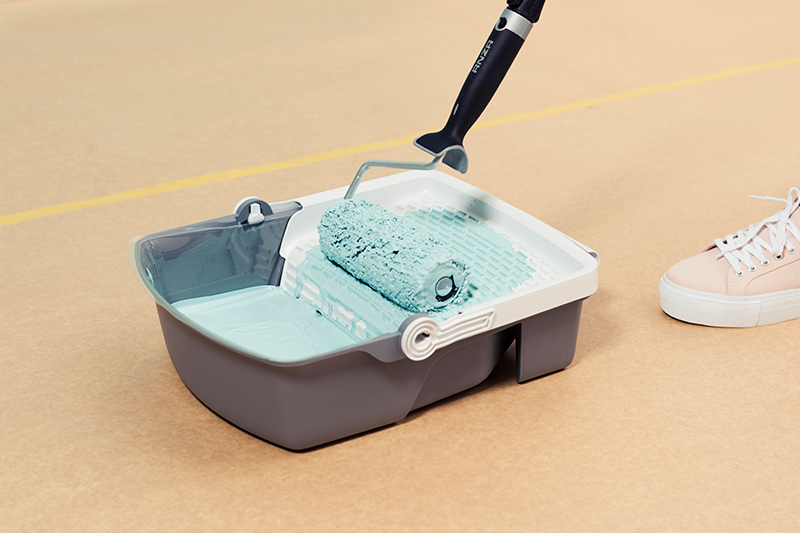Keep a lot of paint in the roller at all times, if you have too little, the result can easily become patchy. Read more about what you can do to avoid a patchy ceiling here: How to avoid patchy ceilings and walls
- Home
- Questions and answers
- Indoors
- How do I avoid the ceiling getting patchy when painting?
How do I avoid the ceiling getting patchy when painting?

More Indoors FAQ
-
Can I plaster a textured or woven wallpaper?
Yes, you can. The trick is to plaster widely and in several layers. This is because plaster dries and does not adhere well if it is applied too thickly. The best tactic is therefore to make several thin layers instead to get a better end result. Make sure you have a reasonably smooth surface between each coat and remove any dust before applying the next coat. See how to do it here: Plastering walls – how to, step by step
-
Should I paint the skirting boards and door frames or the wall first?
Start by painting the walls, then the skirting boards and door frames. However, you should paint the cornices at the same time as you paint the ceiling to get a better and more uniform result. If you’re going to wallpaper, it’s a good idea to paint the skirting boards first, so you don’t have to worry about any paint stains on the wall. See how to do it here: Paint a trim – how to, step by step
-
In which direction should I paint my furniture?
Always paint and sand in the direction of the wood grain.
-
From which direction should I plaster a wall?
If you are right-handed, it is easiest to work from right to left. Remember to apply hard pressure on the left side of the plaster and no pressure on the right side. This will make it easier to spread the plaster so that you don’t get any edges.
-
In which direction should I paint the ceiling?
Roll in the direction of the light. This makes the rollers less visible.
-
Why should you paint with varnish on any knots?
Without a varnish, there is a high risk that the knots will bleed through after some time. So paint the knots with a brush and fill in any imperfections and nail holes.
-
How do I pattern match wallpaper?
Start by finding out the height of the pattern. It is indicated on the wallpaper roll. The pattern height shows how often the pattern is repeated. The higher the pattern height, the more waste you can expect.
Then pull up the wallpaper strip until the pattern fit matches the previous strip. Press lightly with your hand to secure the strip and slide them to the correct height. Then continue as usual with the wallpapering.
-
How to get a stable corner when wallpapering?
To get a stable corner that won’t crack, the wallpaper needs to overlap the corner by 1 cm. Start by measuring the distance from the corner to the previous strip. Measure both up and down. If the measurements are different, use the largest measurement.
If you have a pattern on your wallpaper, you’ll also need to match the pattern with the previous one to see where the wallpaper needs to be trimmed.
-
What is important to consider before wallpapering?
Start by cover your floor with rosin paper and masking tape to protect against wallpaper paste. Remove all switches and wall sockets. Check which of the corners of the room is the least eye-catching. Start or finish wallpapering there. This is especially important if you are using patterned wallpaper.
The first layer of wallpaper should overlap the corner by one centimetre. Measure the width of the wallpaper roll with a folding ruler and subtract 1 cm from the width. Then mark the measurement (width of the wallpaper roll – 1 cm) on the wall with a pencil.
Walls are rarely perfectly straight. To make sure all the waves are straight, you need to solder the first wave. You can do this by drawing a so-called plumb line on the wall with a pencil and a spirit level.
